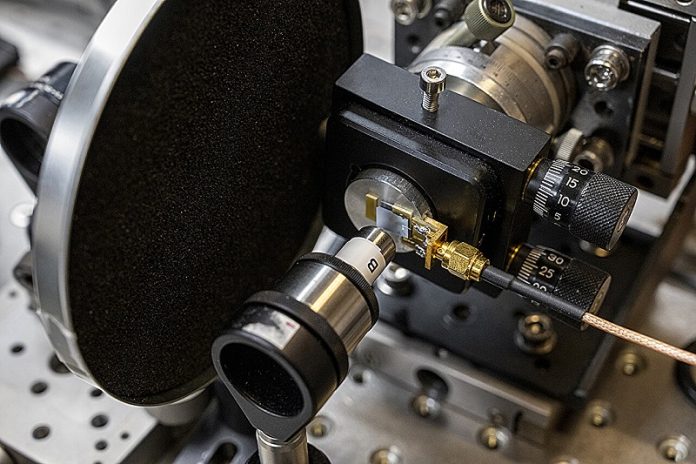
More than 200 years ago, physicist Thomas Young amazed the scientific world when he showed that light behaves like both a wave and a particle.
His simple but powerful double-slit experiment became one of the most important demonstrations in physics.
Now, for the first time, scientists have repeated this iconic experiment—not with light, but with sound.
Their results reveal surprising similarities and differences between how sound and light behave at extremely small scales.
The research, carried out by physicists in Leiden and published in Optics Letters, could lead to advances in 5G technology and the growing field of quantum acoustics.
Young’s original double-slit experiment involved shining light through two narrow openings. When the light passed through the slits, the waves interfered with each other, creating a pattern of bright and dark stripes on a screen.
This showed that light behaves like a wave. Later, the experiment proved even more astonishing when it was repeated with particles such as electrons and molecules, revealing that all matter has wave-like properties under certain conditions.
In the new study, PhD student Thomas Steenbergen and colleague Wolfgang Löffler wondered what would happen if the same experiment were performed with sound—specifically with extremely high-frequency sound waves.
They used gigahertz sound waves, which vibrate a billion times per second. These frequencies are far above what humans can hear, but they are commonly used in modern technologies, including 5G devices.
The team directed these ultra-fast sound waves onto a small piece of gallium arsenide, a semiconductor often found in electronic components.
To recreate the double-slit setup, researcher Matthijs Rog carved two tiny grooves into the material using a focused ion beam, which allowed him to create slits only a few micrometers wide.
The scientists then used a highly precise optical scanner to measure the sound waves at and around the slits. This special device can detect changes at the level of picometers—one millionth of a micrometer—allowing the team to map the sound waves in incredible detail.
Just as with light, the sound waves formed an interference pattern behind the slits. The researchers could clearly see areas where the waves strengthened each other and where they canceled out. But there was an unexpected twist: the pattern was not perfectly symmetrical. This happened because sound waves do not travel through the material at the same speed in every direction.
Their behavior depends on the angle at which they move through gallium arsenide. Steenbergen and his team developed a mathematical model to explain these differences, and their predictions matched the measurements closely.
This new understanding of how gigahertz sound waves move through materials could help improve technologies that rely on high-frequency sound, such as 5G communication devices and advanced sensors.
It also lays important groundwork for quantum acoustics, a new area of research that uses tiny sound waves to carry information at the quantum level.
By repeating a centuries-old experiment with a modern twist, scientists have shown that there is still much to learn about the invisible waves that shape our world.



